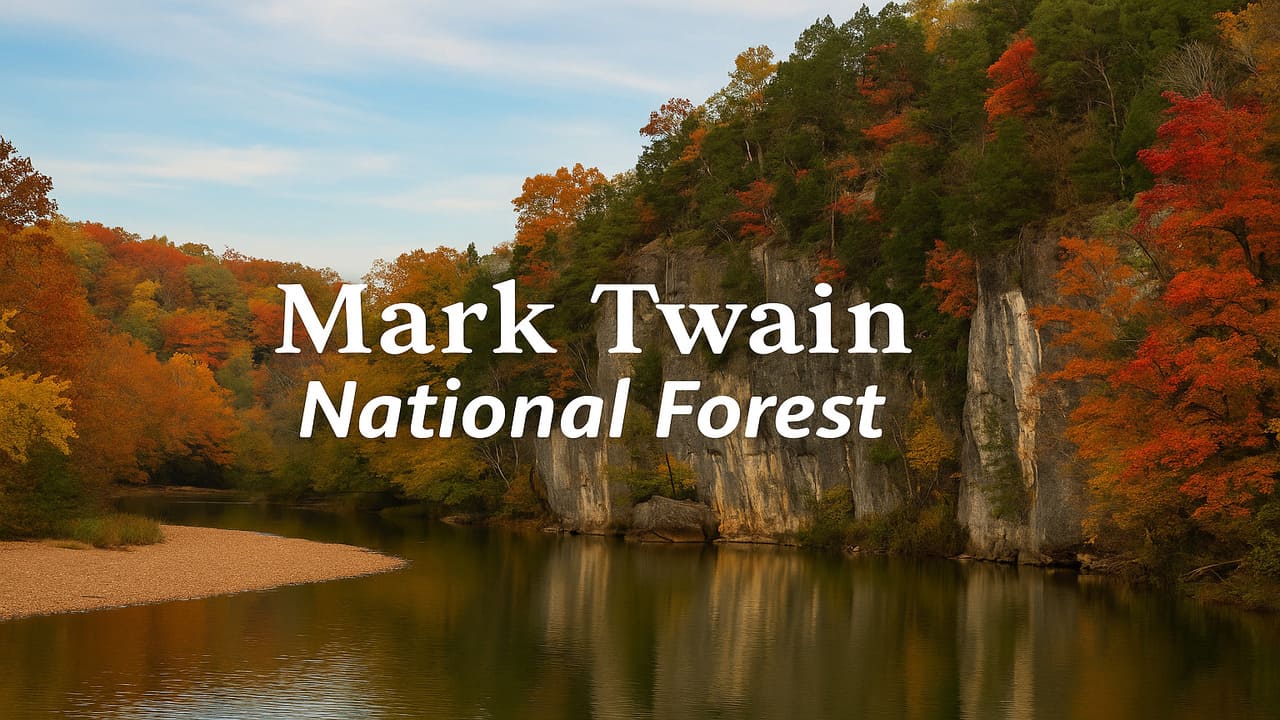
Visit MarkTwain Lake – The Mark Twain National Forest, located in the heart of Missouri, is one of the most diverse and scenic public lands in the United States. Spanning over 1.5 million acres, this forest offers a rich tapestry of rolling hills, clear streams, towering bluffs, and dense woodlands. Named after the celebrated American author and Missouri native Mark Twain, the forest stands as a testament to the natural beauty and cultural heritage of the state.
This vast forest covers 29 counties and offers a wide range of recreational opportunities. Whether you’re seeking solitude in a remote wilderness area, planning a family camping trip, or embarking on a rugged backpacking adventure, the Mark Twain National Forest provides endless possibilities. It’s not just a place for outdoor activities it’s a destination that inspires reflection and a deeper connection with nature.
One of the main attractions of the Mark Twain National Forest is its variety of year-round activities. In the warmer months, visitors flock to its many lakes, rivers, and streams for fishing, canoeing, kayaking, and swimming. Popular waterways such as the Eleven Point National Scenic River and the Current River are known for their crystal-clear waters and are favorites among anglers and paddlers alike.
During autumn, the forest transforms into a spectacular canvas of red, orange, and gold as the leaves change color. Hikers take advantage of this season to explore trails like the Ozark Trail, which offers breathtaking views of the fall foliage. Winter brings its own charm, with opportunities for wildlife watching, photography, and peaceful hikes through snow-dusted landscapes.
Read More : Perry Boat Ramp: Gateway to Memorable Lake Adventures
The Mark Twain National Forest is home to an incredible variety of plants and animals. Visitors may encounter white-tailed deer, wild turkeys, river otters, and even the occasional black bear. Birdwatchers are particularly drawn to the forest for its diverse avian population. Which includes bald eagles, red-tailed hawks, and numerous songbirds.
The forest also boasts unique ecosystems such as oak-pine woodlands, glades, and wetlands. These habitats support a wide range of plant species. Including wildflowers that bloom in the spring and summer, adding splashes of color to the green landscape. This biodiversity makes the forest not only a recreational treasure but also an important conservation area.
Also Read : Unveiled Secrets of Horus: The Legendary God’s Untold Story Will Blow Your Mind
For those looking to extend their stay, the forest offers numerous camping options. From developed campgrounds with amenities to backcountry sites. Popular camping areas like Berryman Campground and Council Bluff Lake Recreation Area cater to different preferences. Whether you’re traveling with an RV or setting up a tent deep in the woods.
Backpackers can take advantage of dispersed camping areas, which allow for a more rugged and secluded experience. These remote spots provide the perfect setting for stargazing, as the forest’s rural location offers minimal light pollution and breathtaking views of the night sky.
The U.S. Forest Service works diligently to maintain the health and accessibility of the Mark Twain National Forest. This includes trail maintenance, wildlife habitat restoration, and educational programs that promote responsible recreation. Visitors are encouraged to follow Leave No Trace principles to ensure that the forest remains pristine for future generations.
Community involvement also plays a role in preservation efforts. Local volunteers, outdoor groups, and environmental organizations often participate in clean-up events, tree planting, and trail improvement projects. These initiatives strengthen the bond between the forest and the people who cherish it.
Beyond its natural beauty, the Mark Twain National Forest holds cultural significance for Missouri. Named after Samuel Clemens better known as Mark Twain the forest symbolizes the adventurous spirit and storytelling legacy of one of America’s greatest authors. Many of Twain’s works, inspired by his experiences in Missouri. Evoke a deep appreciation for the landscapes and communities that the forest now protects.
Local towns surrounding the forest benefit from tourism, with small businesses, outfitters, and guides offering services to visitors. This connection between the forest and the local economy underscores the importance of maintaining its natural and cultural heritage.